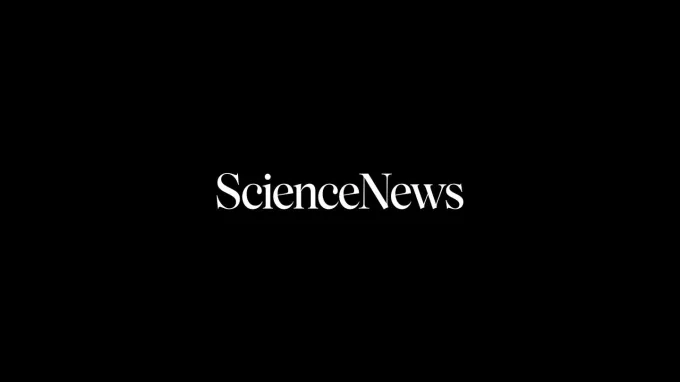Science News Magazine: Current Issue
Vol. 158 No. #22
Trustworthy journalism comes at a price.
Scientists and journalists share a core belief in questioning, observing and verifying to reach the truth. Science News reports on crucial research and discovery across science disciplines. We need your financial support to make it happen – every contribution makes a difference.
More Stories from the November 25, 2000 issue
-
 Health & Medicine
Health & MedicineSputum Test May Predict Lung Cancer
By zeroing in on aberrations in two cancer-fighting genes, researchers have found a marker for cancer risk that could help doctors screen people for signs of lung cancer early enough for treatment to be effective.
By Nathan Seppa -
 Materials Science
Materials ScienceTo make bronze, tin flakes do a wild dance
Upsetting some prevailing ideas about how alloys form, rafts of tin atoms jitterbug madly around on a pure copper surface and leave spots of bronze in their wakes.
By Peter Weiss -

Low-cal diet may reduce cancer in monkeys
Researchers monitoring monkeys have seen signs that slashing normal calorie consumption can benefit long-lived primates by extending natural life spans and reducing the odds of suffering diseases such as cancer.
By John Travis -
 Animals
AnimalsReally big guys restrain youth violence
Importing six full-grown bull elephants into a park of youngsters stopped killing sprees by young males.
By Susan Milius -
 Tech
TechNovel sensing system catches the dud spud
A new device can detect a single potato that's infected with bacterial soft rot while buried deep in a storage crate with hundreds of healthy tubers.
-
 Astronomy
AstronomyOld stars shed light on young Milky Way
Analyzing the composition of 70 of the oldest stars in the galaxy—the largest such sample so far—scientists have found new evidence that a generation of short-lived stars that died explosively must have preceded this elderly population and that the oldest part of the Milky Way originated not as a single component, but as bits and pieces that may have taken several hundred million years to form and coalesce.
By Ron Cowen -
 Animals
AnimalsTime to revise right whales’ family tree?
A statistical analysis of DNA from nearly 400 right whales around the world suggests there may be three species of Eubalena, not just two—a conclusion that may boost conservation efforts.
By Laura Sivitz -
 Paleontology
PaleontologyFossil find extends ants’ ancient lineage
The recently described, 92-million-year-old fossil of a primitive worker ant pushes back the first record of its particular subfamily by 40 million years, forcing researchers to reevaluate their ideas about the early evolution of these insects.
By Sid Perkins -
 Health & Medicine
Health & MedicineCaffeine may ward off Parkinson’s
Scientists may have found an explanation for why coffee drinking prevents Parkinson's disease.
By John Travis -
 Health & Medicine
Health & MedicineA vaccine to help ex-smokers
By generating antibodies that neutralize nicotine, a vaccine could keep ex-smokers from getting the nicotine high that drives many of them back to their bad habit.
By John Travis -

Perfect pitch common among the blind
Blind musicians are more likely to have perfect pitch than are sighted people.
By John Travis -

Blame the brain for lack of rhythm
Some people are born with dysmusia, a condition marked by difficulty learning to play music or recognizing melodies.
By John Travis -
 Health & Medicine
Health & MedicineBoldly into the breech controversy
Addressing a long-simmering controversy, a large new study has shown that in pregnancies where the baby has positioned itself to emerge feet or buttocks first, the delivery safest for the mother and child is a planned cesarean section rather than a vaginal birth.
-
 Health & Medicine
Health & MedicineCancer cells on the move
A new study suggests how a gene recently linked to liver, skin, and pancreatic cancer also causes an often-deadly form of breast cancer.
-
 Earth
EarthProblems with eradicating polio
The oral vaccine's live but attenuated virus may in rare cases revert to the disease-causing form, which can then turn up in natural waters even in regions now certified free of the wild-type virus.
By Janet Raloff -
 Earth
EarthInfectious stowaways
A new study finds that ballast water can move huge quantities of cholera germs and other microbes between ports around the globe.
By Janet Raloff -
 Plants
PlantsLowering lilies on the tree of life
Water lilies may belong on the lowest branch of the family tree of flowering plants, along with a shrub called Amborella.
By Susan Milius -
 Anthropology
AnthropologyOut on a Limb
The science of body development may make kindling out of evolutionary trees.
By Bruce Bower -
 Tech
TechWhen the Chips are Down
Scientists seek alternatives to a computer technology nearing its limits.
By Laura Sivitz
